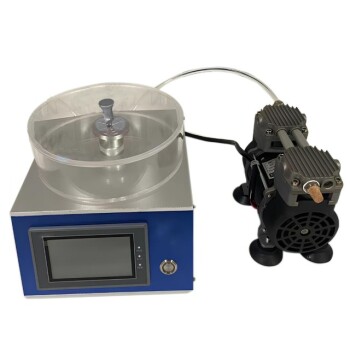At its core, tire recycling involves two main strategies: mechanically grinding them into rubber particles for use in other products, or using advanced chemical and thermal processes like pyrolysis to break them down into fuel oil and other raw materials. These methods transform waste tires from an environmental liability into a valuable resource for construction, manufacturing, and energy.
Tire recycling is not about turning old tires into new ones. Instead, it's a process of deconstructing tires into their fundamental components—rubber, steel, and fiber—to be repurposed for entirely different applications, primarily in infrastructure and fuel production.
Two Primary Recycling Pathways
Waste tires are difficult to recycle because they are designed to be incredibly durable. The vulcanization process that makes rubber strong also makes it hard to break down. Modern recycling focuses on two distinct approaches to overcome this challenge.
Mechanical Processing (Grinding)
The most common method is mechanical processing, which involves physically shredding tires into smaller pieces.
This process reduces whole tires into ground rubber or crumb rubber of various sizes. Steel and fiber components are removed during this process and recycled separately. The resulting rubber granules are a versatile raw material.
Chemical & Thermal Processing
More advanced methods use heat and chemical reactions to decompose the tire material.
Pyrolysis is a key technology where tires are heated to high temperatures in an oxygen-free environment. This breaks the rubber down into its constituent parts, producing a synthetic crude oil (fuel), carbon black, and scrap steel.
Devulcanization is another emerging process that uses chemicals or other means to reverse the original vulcanization, making the rubber more pliable and easier to reuse in new rubber products.
What Are Recycled Tires Used For?
The materials recovered from tire recycling have a wide range of applications, almost none of which involve manufacturing new passenger car tires.
Civil Engineering & Construction
A primary market for recycled tire material is in large-scale infrastructure projects.
It is used as recycled asphalt pavement, a crumb rubber modifier in hot melt asphalt to improve road durability, and as a lightweight aggregate for cement concrete.
Industrial Products & Landscaping
Ground rubber is used to create a variety of products for industrial and consumer use.
Common examples include playground surfaces, athletic tracks, and flooring mats. It is also sold as bark mulch for garden beds, where it helps retain moisture and suppress weed growth.
Fuel & Energy Production
The oil produced through waste tire pyrolysis serves as a valuable fuel source. This synthetic oil can be used to power industrial boilers and furnaces, effectively turning waste tires into an energy resource.
Understanding the Limitations: Why Old Tires Don't Become New Tires
While tire recycling is a mature industry, there is a critical limitation that often causes confusion: recycled rubber is rarely used to make new tires.
The Challenge of Safety and Performance
The vulcanized rubber in a tire has specific properties essential for safety, including traction and durability.
When this rubber is ground up and reformed, it loses its original structural integrity. Tires made with a high percentage of recycled material are considered inferior and unsafe, exhibiting lower traction and a significantly reduced tread lifecycle.
The 5% Rule
Due to these safety concerns, regulations and industry standards are strict. A new tire cannot have more than 5% of its weight come from recycled materials. This small amount is typically used as a processing aid rather than a core structural component.
This means that a "closed-loop" system, where old tires are used to create new ones, is not currently feasible from a safety and performance standpoint.
Making the Right Choice for Your Goal
Understanding the realities of tire recycling helps frame its true purpose: resource recovery, not direct product replacement.
- If your primary focus is environmental benefit: Recognize that recycling is highly effective at diverting tires from landfills and turning them into valuable materials for long-lasting infrastructure like roads and buildings.
- If your primary focus is material science: The key challenge is safely reversing vulcanization, which is why pyrolysis and devulcanization remain critical areas of innovation.
- If your primary focus is practical application: The most significant uses for recycled tires are as ground rubber for construction and as a fuel source, not for manufacturing new tires.
Ultimately, tire recycling is a successful example of repurposing a durable waste product into a valuable industrial feedstock.
Summary Table:
| Method | Process | Primary Outputs | Common Uses |
|---|---|---|---|
| Mechanical Processing | Shredding and grinding tires | Rubber granules, crumb rubber | Playground surfaces, asphalt, landscaping mulch |
| Chemical/Thermal Processing | Pyrolysis (heating without oxygen) | Fuel oil, carbon black, steel | Industrial fuel, manufacturing feedstock |
Optimize Your Tire Recycling Process with KINTEK Solutions
Transforming waste tires into valuable resources requires precision and reliability. At KINTEK, we specialize in advanced laboratory equipment and consumables that support the research and development of efficient recycling methods like pyrolysis. Whether you're analyzing material properties or scaling up production, our solutions help ensure accuracy, safety, and innovation in your operations.
Let KINTEK empower your recycling initiatives. Contact our experts today to discuss how our lab equipment can enhance your tire recycling projects and contribute to a more sustainable future.
Related Products
- Liquid Nitrogen Cryogenic Grinder Mill Cryomill Airflow Ultrafine Pulverizer
- Mini Planetary Ball Mill Machine for Laboratory Milling
- Benchtop Laboratory Homogenizer Mixer with 4 Inch Aluminum Alloy Chamber
- High Energy Planetary Ball Mill Machine for Laboratory Horizontal Tank Type
- Lab Plastic PVC Calender Stretch Film Casting Machine for Film Testing
People Also Ask
- What is the difference between ball mill and grinding balls? Master Your Grinding Process for Optimal Results
- What is a cryo mill? Grind Tough, Heat-Sensitive Samples with Cryogenic Power
- What is an example of pulverized? From Crushing Rocks to Winning Debates
- How do you increase production in a ball mill? Optimize Speed, Media, and Feed for Maximum Throughput
- How do grinding mills work? Choose the Right Method for Your Material




















